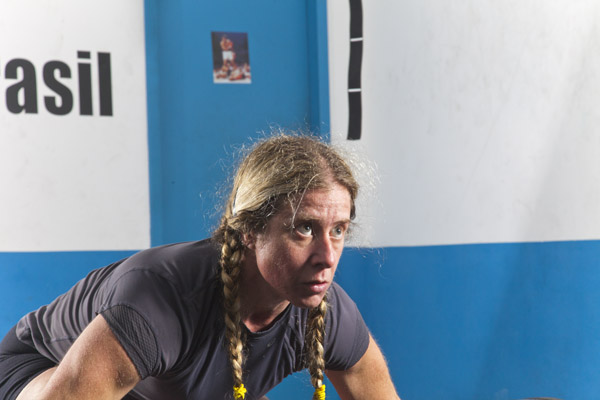Eric Brown (@oracleofihop) and Marilia Coutinho (@marilia_coutinho)
Few lifts have the complexity – and generate the controversy – as the snatch and clean. Included in the Olympics since 1896, they have been the basis for many strength and conditioning programs at both the collegiate and professional levels. The quick lifts have any number of benefits which may be of use to the powerlifter wishing to improve their three-lift total or just looking for a little variety. However, as with any complex gesture from the repertoir of another sport, there is controversy as to their use: if they should be used at all in a competitive preparation and, if so, how. Let us start by pointing out the potential benefits:
- Extra work for the upper back and external rotators. The power snatch alone is a phenomenal exercise for both areas, and the power clean allows more weight to be used to further build the back. Stability in the upper back is critical in just about every lift. The Cuban press, an exercise used to train and strengthen the external rotators, is an adaptation of weightlifting assistance work. This can help avoid strength imbalances and rotator cuff injuries in general.
- Teach you to quickly bring your hips into line. Most of us have had trouble dumping a squat forward or trying to lock out a deadlift and failing because our ass was behind, literally. The focus on extension on the quick lifts is hard to beat. A lifter who has trouble bringing the hips forward on the squat or deadlift may benefit from the constant, sudden extension of the hips on the pull during weightlifting.
- Speed work. I really should not have to expand on the importance of quickly generating power when pulling weights off of the floor. But I will. The Olympic lifts generate more power than powerlifting.(1) and power improves maximal strength. If this is what we are training for, it makes a certain amount of sense to practice it. While power production can be increases on the deadlift by lightening the load, weightlifting can provide multiple benefits that speed deadlifts do not.
- Skill. Learning these lifts – properly – takes a great deal of skill. Often makes learning other lifts much easier. Weightlifting can teach timing, speed, balance and other skills that improve overall athleticism.
- Training volume. Being a powerlifter means you are an athlete, and a certain degree of well-roundedness can help with respect to conditioning and tolerance for training volume.
- Flexibility. Weightlifting demands more flexibility. This often forces lifters who have not been attending to this enough to fix that error. Flexibility in the shoulders, upper back and hips is mandatory for successful weightlifting.
- Stability and maintaining the line of gravity. All in all, every lift and even human locomotion in general is about maintaining the line of gravity while the center of mass is being dislocated. Learning and automatizing the task of doing it as fast as possible, as required in the quick lifts, transfers back to the same task with higher loads, as required in the powerlifts.
- They are fun, and lifting should be fun. Putting a really big weight overhead in a dynamic manner is just plain cool. If you have been doing the same thing for years, or decades, this might be a way to enjoy aspects of training that you have not done much with, and this can be motivational.
This is not to say that all powerlifters need to spend time training in weightlifting. Far from it. Here it is presented only as an option. And it would not be fair to not point out some of the negatives.
- Learning curve. While the basics of weightlifting can be taught quickly, mastery of these lifts take time, and often this is time that is not available. If you only have four sessions of available training time a week, due the constraints of life, spending two of them practicing the snatch and clean might not be the best use of your time.
- Flexibility. While increasing your flexibility is a benefit, if you are so big that when you go to the beach people shout “save him” and try to push you back into the water, you might have some issues developing the necessary flexibility. If you have multiple pec tears, this might further limit your flexibility. So you may wish to find other methods of training.
- Intensity and load. This is the chief reason the quick lifts acquired a bad reputation among powerlifting coaches: using higher intensities than what is desirable for weightlifting as assistance work. Training weightlifting close to a weightlifter’s level of intensity, should one manage to master the technique well enough to do so, will erode performance on the powerlifts, period. Being a “cross-athlete”, producing excellence in both sports is simply not realistic and will lead to failure and injury.
How to implement the quick lifts
At first learning the snatch and clean can be intimidating. And if your time is limited, you may be better served by learning the power snatch and power clean. As a general rule, learning the quick lifts is best done by practicing the full lifts. In the case of an experienced powerlifter who is using them just as assistance work, the power versions may be enough to either get benefits from, or decide that they are not for you.
- Review of Power Output Studies of Olympic and Powerlifting: Methodology, Performance, Prediction and Evaluation Tests. Garhammer, J. Journal of Strength and Conditioning Research, 1993, 7(2).

